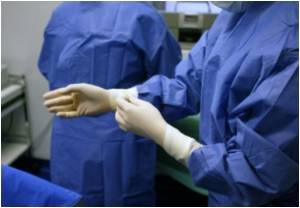A pediatric urologist at UT Southwestern Medical Center has performed a operation for young girls who have absent or malformed vaginas.

"It was initially challenging to construct a treatment for something so rare," said Dr. Linda Baker, professor of urology at UT Southwestern and a surgeon at Children's Medical Center Dallas. "My goal was to develop a treatment that would lead to a natural repair at the first operation, as well as a method to correct vaginal scarring in girls and women who'd had prior, unsuccessful vaginal surgeries."
Existing procedures for these conditions include using portions of a patient's skin or lower intestine to build the vaginal walls and an external vaginal opening. Dr. Baker began studying other areas of the body for potential healthy tissue to use and discovered that interior cheek tissue, or buccal mucosa, had several similar physiological qualities to vaginal tissue in its thickness, elasticity, strength and visual similarities.
"There were many surgical methods for reconstructing the vagina, but when I began seeing these patients, I thought the results were not natural-looking and inadequate in many cases," said Dr. Baker, director of the Sarah M. and Charles E. Seay Center for Pediatric Urology. "Too many suffered with complications from these types of vaginal reconstructions, often leading to painful intercourse in adulthood."
The surgery begins by removing a portion of the top layer of cheek tissue from inside a patient's mouth. That tissue is then stretched and made into a graft that is perforated, much like a skin graft. Once complete, the graft is wrapped around a plastic mold and fitted inside the patient's body.
"After a week or so, the mold is removed, and the graft is vascularized," Dr. Baker said. "The tissue cells fill in the gaps, and the new vagina becomes complete. The mouth heals quickly, and no one can see any scars from the surgery."
Because the tissue comes from the patient's own body, there is no risk of rejection, and the vagina functions similarly to a natural vagina. Another major advantage to the surgical procedure is that it can be done with minimal damage to surrounding tissue. Patients undergoing the older methods for vaginal reconstruction may require surgery that involves entering the abdomen, which means recovery is much longer. Those procedures carry a higher risk of postsurgical complications, something minimized for women who have the buccal mucosa graft.
In some women, the uterus and fallopian tubes are malformed or damaged from trapped menses behind a malformed or blocked vagina. In these cases, Dr. Baker teams up with Dr. Ellen Wilson, associate professor of obstetrics and gynecology at UT Southwestern and Children's.
"In general, vaginal birth defects are something young women suffer from silently – it is so personal. It's not something they want to talk about, which makes it harder to resolve. This isn't a common problem, but it's a serious one that doesn't receive much attention," Dr. Baker said. "So far we've done 23 of these procedures with minimal complications, and we're hopeful this becomes a more and more common way to treat these patients."
Source-Eurekalert











